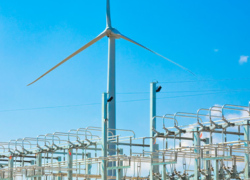Chinese Finance to LAC in 2015

The Inter-American Dialogue is pleased to publish this account of Chinese finance to Latin America and the Caribbean in 2015. Both this report and the China-Latin America Finance Database are the product of collaboration between the Dialogue's China and Latin America program and Boston University's Global Economic Governance Initiative (GEGI). The Dialogue-GEGI China-Latin America Finance Database features upwards of $125 billion in Chinese policy bank loans to LAC governments and state-owned firms since 2005.
The authors find that:
- 2015 was the second highest year on record for Chinese state-to-state finance in Latin America, with loans to the region topping $29 billion. Much of this finance was announced during Premier Li Keqiang’s 2015 trip to Latin America.
- In 2015, Chinese finance to Latin America surpassed World Bank and Inter-American Development Bank lending to the region combined.
- China continues to be an important source of finance for those countries in LAC (e.g., Venezuela and Ecuador) with weaker access to global capital markets.
- Venezuela has received $65 billion since 2007, or approximately 52 percent of total Chinese policy bank finance in the region. Another 34 percent of Chinese finance to Latin America went to Argentina, Brazil, and Ecuador.
- Chinese banks continue to focus on LAC’s extractive and infrastructure sectors. From 2005 to the present, Chinese policy banks financed $40.3 billion in infrastructure projects (e.g., highway and facility contruction), as well as many energy projects with infrastructure components. Energy loans, including China’s oil-backed lending to Venezuela through the China-Venezuela Joint Fund, accounted for $70.2 billion of overall Chinese finance in LAC since 2005.
- In addition to China’s many bilateral loans to LAC, Beijing also recently established approximately $35 billion in region-wide funds for infrastructure and other projects. It is unclear whether these funds are a means for restructuring existing bilateral capital or an entirely new source of finance.



















